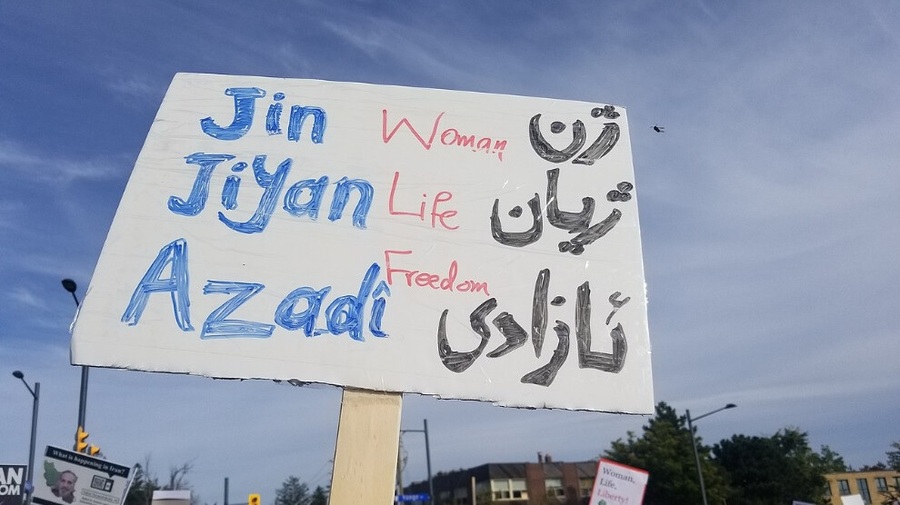Although Iran is a multi-ethnic and multi-cultural country, it has been ruled by Persian politicians for the past hundred years. In all three governments of Reza Shah Pahlavi, Mohammad Reza Shah Pahlavi, and the Islamic Republic, the plans were in favor of pan-Persianism and against the nations under the rule of these governments.
From the beginning of Reza Shah's reign, one of the biggest problems of the great Iranian dictator was how to weaken and destroy the identity will of the subjugated nations of Iran. The plans of the illiterate king of history started by killing Mirza Kuchak Khan Jangali, the leader of the Jangal uprising in northern Iran, and the assassination of Smail Agha Simko in Kurdistan.
Mohammad Reza Shah, son of Reza Shah, who continued to rule with the slogan of cultural conservatism and the revival of the ancient Persian kingdoms, saying "Syrus, rest in peace, for we are awake", meant we are aware of Iranian politics and Persian sovereignty. He expressed his opposition to all Iranian nations by suppressing the two republics of Kurdistan and Azerbaijan and killing hundreds of thousands of people from these two nations.
The Islamic Republic's agenda in this regard is clear and was one of the consequences of the Zhina Revolution, which began with the slogan “Women, Life, Freedom”.
Mehdi Jalali Tehrani is a Persian political figure with an anti-centrist idea in Iran. In his latest article, he mentions an important point that needs to be addressed, and Kurdish readers and people should focus on this kind of thinking and analysis and promote it so that the voice of a minority among the Persians reaches the majority of Iranians.
In an article entitled "The Surprise of the Zhina Revolution," the author points out that the Zhina Revolution in Iran was stolen by the central Persians and deprived of its authenticity. Therefore, it has not been accomplished yet. Mentioning the slogan of the revolution, "Jin, Jiyan, Azadi", he says, "Instead of studying the historical, political, and social context of the revolution, the Persians should try to sympathize with its founders by understanding its meaning, and finally, they should align themselves with the anti-repression, anti-unity, and anti-women movement", but the only thing they did was stealing the slogan from the Kurds and translating it into their language Persian. But the Persians should have known that "woman" in Kurdish does not only mean woman in Persian, but "Kurdish woman". Kurdish women have a history of freedom, striving for social equality, armed struggle against the invaders, opposition to masculinity and the central theme, and many other issues that cannot be found in activities among Persian women.
The above statements are not the words of a Kurdish writer who is just supporting the women of his nation, but the statements of a Persian writer and politician who wants to reveal another truth by reading Zhina revolution and Kurdish women correctly.
In the Revolution "Woman, Life, Freedom", which began in Saqqez and later spread throughout the East part of Kurdistan, Iranian opposition politicians welcomed the movement and organized themselves with the revolution by translating and adopting the slogan of women, life, and freedom. But then both the Persian centrists and the Persian opposition abroad, with their centrist mentality, again failed to understand the meaning of the Kurdish slogan. At first, they tried to reinforce a masculine slogan against it. They chanted "Man, Country, Prosperity." The slogan was so clichéd, anti-women, and anti-freedom that shame was the only consequence of its bearers, who included the vast majority of the monarchists.
Then they tried to reduce women's problems by emphasizing secondary issues such as the hijab alone. "Women, life, freedom" contains hundreds of symbols for political and social analysis in each word, one of which is the hijab. Life in all its meanings; social, economic, cultural, freedom in all its meanings, from political, social, economic, cultural, and racial freedom to freedom of religion and expression, but the central Persian writers and politicians heard and saw only the body and hair of women. They only meant Persian women of center, not Kurdish women, who have long struggled for freedom, equality, and opposition to totalitarian systems. Therefore, the words of Mehdi Jalali Tehrani, a Persian writer, politician, and Iranian oppositionist, give a more honest meaning when he says: We Persians followed the Kurds in the Zhina Revolution, but we did not understand the meaning of their revolution, and only translated the slogan into Persian while the slogan is Kurdish and has a history of political, social, and cultural resistance and struggle behind it. Unless we know and understand this history, our revolution will not succeed.
That is why the famous contemporary philosopher Slavoj Zizek says: "I was closely aware of the events in Iran, but one morning when I woke up and saw an important slogan such as "women, life, freedom" in Iran, I was shocked. The slogan was different from Iran's previous stereotypical slogans. They used to say, "Cannon, tank, firecracker, mullahs must get lost," but now such a radical slogan has emerged overnight. “I called a Persian sociologist named Yousef Abazari and asked him what the slogan was and how it came about. He replied that the slogan originated in Kurdistan. Then I realized that such an effective, strong, and radical slogan would not have emerged elsewhere but in Kurdistan."









